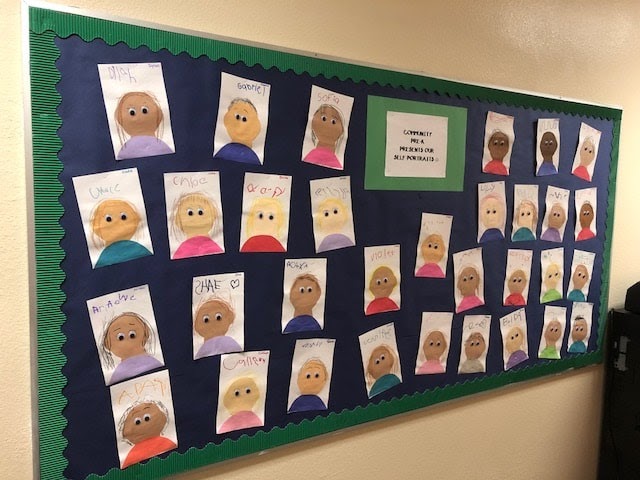2
Riley Peterson
When it comes to educating our students, in order to help them succeed, it’s important that we understand what motivates them to learn in the first place. This can look different for children in various stages of adolescence and development. The things that motivate a teenager versus a third grader versus a preschooler are of a wide variety. Preschool aged children generally range from ages 4-5. At this stage, children have yet to develop social cognitive skills that function to support their understanding of self as well as others.
Self perspective is significant in identity development of young children, “The relation between structural brain development and identity development provides important insight into the potential differential trajectories of brain development, but experimental measures of self-concept are necessary to understand neural responses when thinking about self” (Crone & Fuligni). Again like motivation, one’s understanding and development of self begins at a young age and fluctuates over time throughout adolescence, “Self-report and experimental studies demonstrated that self-evaluations are relatively positive early in childhood (referred to as the positivity bias) and become more negative, or more realistic, in early adolescence, when they are based more on social comparisons” (Crone & Fuligni). It’s helpful to support young children in developing a sense of self and understanding how to view themselves positively. Since self view does in fact become more complicated (sometimes negative) later in adolescence, it’s valuable to really support the development of self view of our young kiddos. Typical examples of how to do this can be found in many preschool programs. For example at St. Anne PreK we like to do a self portrait project. Each child gets a mirror. They are guided through looking at the mirror and identifying their physical attributes and details of what they look like. What is the color of your hair? Is it long? Is it short? Is it curly? Straight? How do you smile? What shape is your nose? Is it big? Is it little? What color are your eyes? And so on. Then they get to create their own self portrait drawing with all the details that they observed. This is a great way to really develop their sense of self and individuality.
An additional cognitive skill linked to motivation that preschool aged children are forming, is a sense of other or others. At 4 years old most children are still developing this idea, and even some children may not even quite be there yet. Acting in society involves understanding and interacting with other people. This is why “development of others” is a significant part of preschool. Many preschool aged children are still learning that they are not the center of the universe. The idea that classmates have thoughts, ideas and emotions of their own can be a brand new concept to many preschoolers. This is why many PreK programs have a lot of focus on sharing, waiting your turn and communicating with others. It was evident to me that many of the kiddos in my PreK class this past year were still developing these understandings. One student, especially struggled with this; for example she would blurt out over others constantly, interrupt, get very upset when it was someone else’s turn and not hers, and disrupt the learning ang playing of others. These are all things I noticed her doing, which we explained to her parents was not wrong, or malicious, but normal for her age and based off of her development of others. She had a difficult time understanding that it was not her turn because it was someone else’s turn. Her awareness of other classmates needing a turn too, was lacking. Another piece that ties into a sense of self and motivation is the “self efficacy theory” which is basically explained as “a social cognitive model of motivation focused on the role of perceptions of efficacy and human agency. Bandura defined self-efficacy as individuals’ confidence in their ability to organize and execute a given course of action to solve a problem or accomplish a task…thus, some people have a strong sense of self-efficacy and others do not” (Eccles & Wigfield). Preschool is a great time to support children in building up their self efficacy. At this young age if we support them, and give them the mentality that they can complete a task, they are much more likely to a) succeed and to b) have higher self efficacy later in adolescence. This was also something I am aware of as a PreK teacher, and worked towards advocating with my students. Being able to observe these patterns and work with students developing these cognitive skills has definitely helped me understand how they are linked to the motivation of my students.
If preschool aged students are still developing cognitive skills that help them understand self and others, we can better understand what motivates them. Since preschool aged children are still developing in these areas, that tells us that they are generally very self motivated. When you’re 4 years old, you are likely still taking in a sense of self, and working on taking in a sense of others around you. So these children are very self motivated. They are motivated by their own self interest which can be detrimental, but that’s what PreK is for. In order to keep them motivated it is important to support them in showing each how an activity is beneficial to them, as well as everyone else. The sense of self and others will keep evolving into adolescence, in which case so will their motivations for going to school and learning.

References
Crone, E. A. & Fuligni, A. J. (2019). Self and others in adolescence. Annual Review of Psychology, 71, 447 – 469. https://doi.org/10.1146/annurev-psych-010419-050937
Eccles, J. S. & Wigfield, A. (2002). Motivational beliefs, values, and goals. Annual Review of Psychology, 53, 109 – 132.
